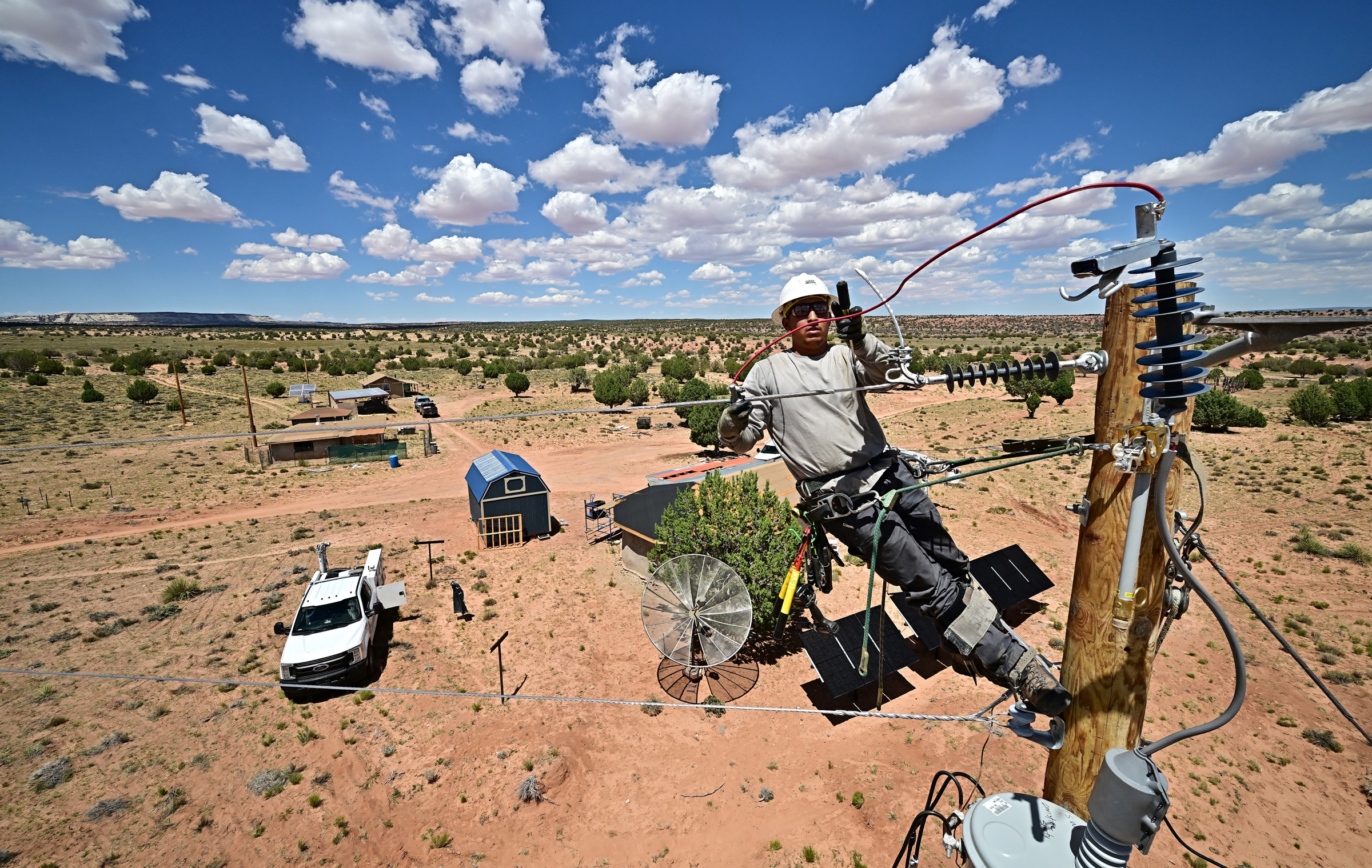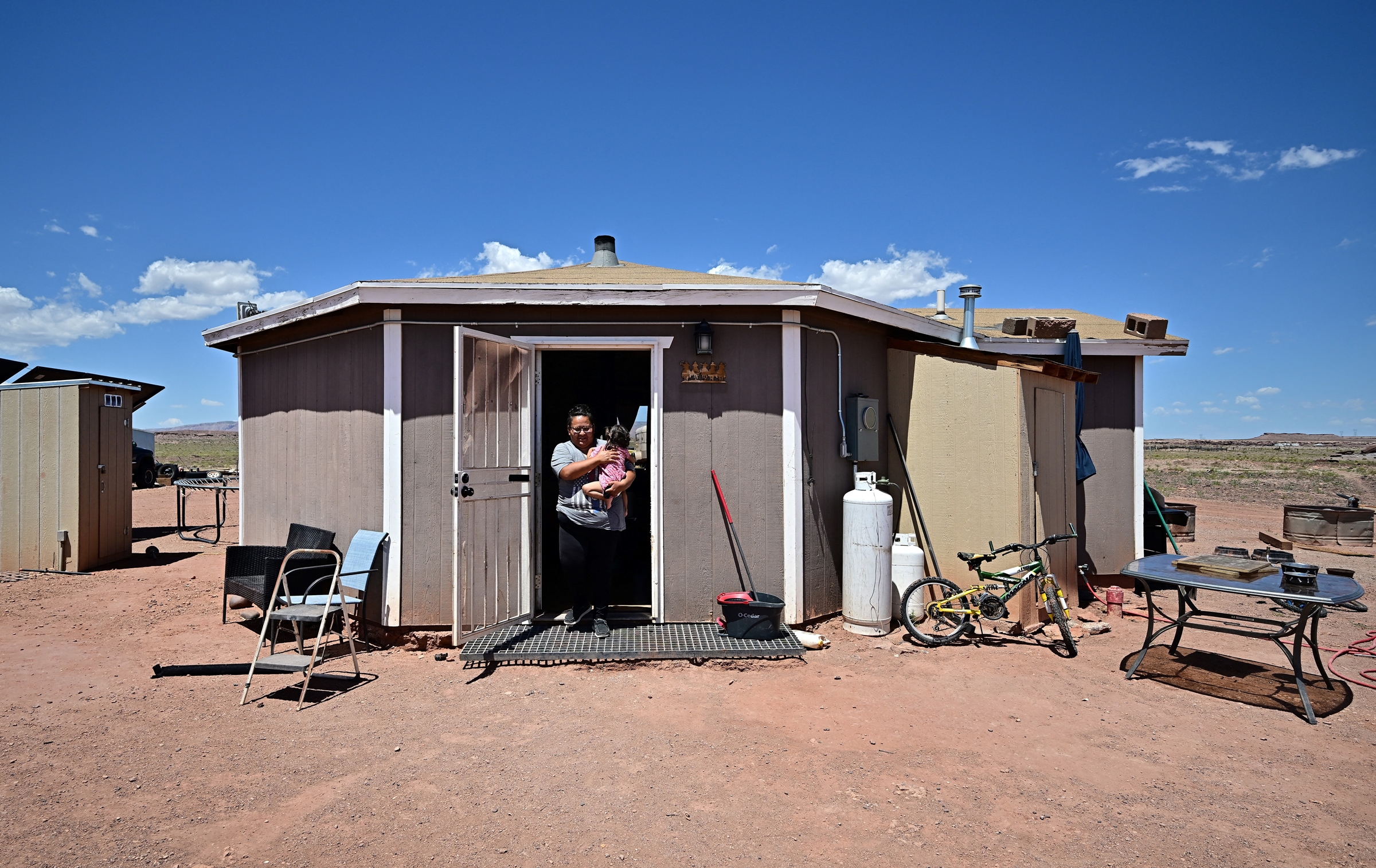On 8/7, electricians planted a power pole into the orange earth of the Navajo Nation and ran a cable to Christine Shorty's home, bringing her electricity to combat the searing Arizona desert heat. This is a luxury for the more than 10,000 families who still live without power, and consequently, without air conditioning.
"Climate change is happening. It's getting hotter," Shorty said. "Having fans, and maybe even air conditioning, will make our lives easier. We are really looking forward to having electricity."
The Navajo Nation is a 71,000 km2 territory of Native Americans, encompassing northeastern Arizona, southeastern Utah, and northwestern New Mexico. It is the largest Native American reservation in the US, with a population of over 170,000.
The Navajo Nation government has three branches: executive, legislative, and judicial, similar to the US government. They have semi-autonomous status, with their own legislative powers, controlling land, resources, and the legal system within the Navajo territory. However, education, healthcare programs, and budgets often partially depend on federal aid.
 |
Cole Garcia, an employee of Mojave Electric Cooperative, works on a power pole to connect electricity for Navajo Nation residents in Tonalea, Arizona, on 8/7. Photo: AFP |
Cole Garcia, an employee of Mojave Electric Cooperative, works on a power pole to connect electricity for Navajo Nation residents in Tonalea, Arizona, on 8/7. Photo: AFP
In her 70 years, Shorty has witnessed significant climate change in the small, isolated village of Tonalea.
Summer rains are increasingly rare, and temperatures can reach 40°C in July and August, previously unheard of in the village located on a plateau at 1,730 m. Seasonal lakes in the area are drying up, and in some years, livestock have died of thirst.
Like many in the village, Shorty's home has a generator and a small solar panel, enough to power a refrigerator, cook, and watch TV. But the limited power generation often forces her to choose which appliances to use.
Being connected to the power grid is "a big change, making my life much more convenient," she said.
Most areas in the US were connected to the power grid in the 1930s thanks to President Franklin Roosevelt's New Deal policy initiatives.
However, in the Navajo Nation, electrification only began in the 1960s, and the transmission lines are still inadequate.
"This area has been overlooked," said Deenise Becenti, an employee of the Navajo Tribal Utility Authority (NTUA), the utility infrastructure management unit of the autonomous region. "It surprises many people. They ask why, right here in the US, the world's largest economy, are there places without electricity like in undeveloped countries?"
 |
Christine Shorty, 70, a Navajo Nation resident, turns on a light switch in her home in Tonalea, Arizona, for the first time on 8/7. Photo: AFP |
Christine Shorty, 70, a Navajo Nation resident, turns on a light switch in her home in Tonalea, Arizona, for the first time on 8/7. Photo: AFP
In 2019, the regional government launched the "Light Up Navajo" project, calling on power companies to send employees to work in the semi-autonomous territory for 12 weeks each year. Since then, 5,000 households have received electricity, 1,000 of which through the project.
But with climate change pushing temperatures higher, families still without power are in "survival mode," she said.
Elbert Yazzie's mobile home is like a furnace in the summer. One of his relatives died of heatstroke.
"I used to like the heat," said the 54-year-old, who lives in the nearby city of Tuba. "But as you get older, your body can't handle it anymore."
A few weeks ago, his home was finally connected to the grid. Since then, he has built a makeshift evaporative cooler using three broken appliances from a junkyard.
"Now we can turn on the air conditioner whenever we want, without having to worry about the heat, the generator, and the fuel," he said. "Now we don't have to go to other people's houses to cool off, we can stay home, relax, watch TV..."
He and Shorty are among the lucky ones. Becenti says that without additional funding, connecting the remaining 10,000 Navajo households could take another two decades.
 |
Gilberta Cortes, 42, holds her child outside their home in Cameron, Arizona, on 9/7. Photo: AFP |
Gilberta Cortes, 42, holds her child outside their home in Cameron, Arizona, on 9/7. Photo: AFP
That's too long for Gilberta Cortes, who no longer lets her children play outside in the summer for fear of them getting nosebleeds from the heat.
A power pole was recently erected in front of the 42-year-old's home, and the power line is expected to reach her house in the next few months. But Cortes is no longer excited, having been disappointed too many times.
"When my parents were young, in their 20s, they were promised electricity, but that promise never materialized," she said. "I'm still angry."
Hong Hanh (According to AFP)












